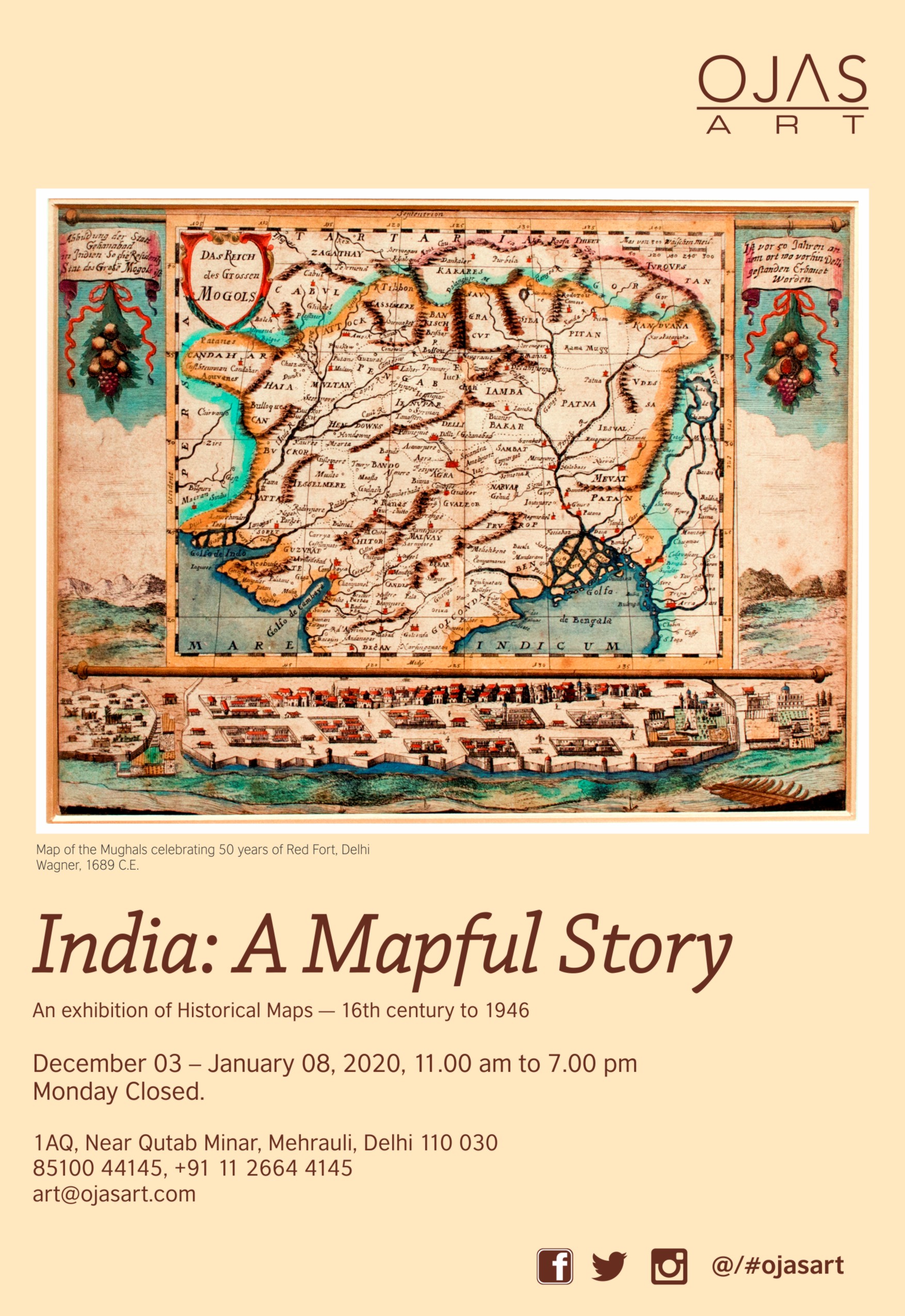An exhibition of Unseen historical maps and other important engravings (circa 17th century to 1946)
It’s interesting how maps define the borders of each country. Pre-Independent India included Pakistan and Bangaldesh (erstwhile East Pakistan) and Post-Independence they became three different nations.
To mark the 70th year of India’s independence, Ojas Art presents a selection of 70 maps by cartographers like Seutter, Rennell, Mortier, Lapie, Bonne and Tallis. Each map narrates a unique story and shows how boundaries have changed over the centuries. The maps have been printed in England, France, Italy and the USA. Each map tells a story. A story that can be traced back through her maps.
“The exhibition presents cartographic works from spanning a period of 350 years. The display does not follow a chronological sequence; it’s very possible that the two works displayed next to each other are actually two or three centuries apart,” said Anubhav Nath, Director, Ojas Art.
Cartography is the art of graphically representing a geographical area. As an art it was at its zenith in 17th-19th centuries as explorers discovered more places and were also able to mark their exact geographical locations with the help of longitudes and latitudes. During that time, there was a vast commissioning of maps by the western powers. Cartography is also educational as it helps in understanding changing geographical boundaries and the possible reasons behind them. The collection on display focuses on maps of Pre-independence India when it represented present day India, Pakistan and Bangladesh.
There will be nearly 100 maps on display.



















